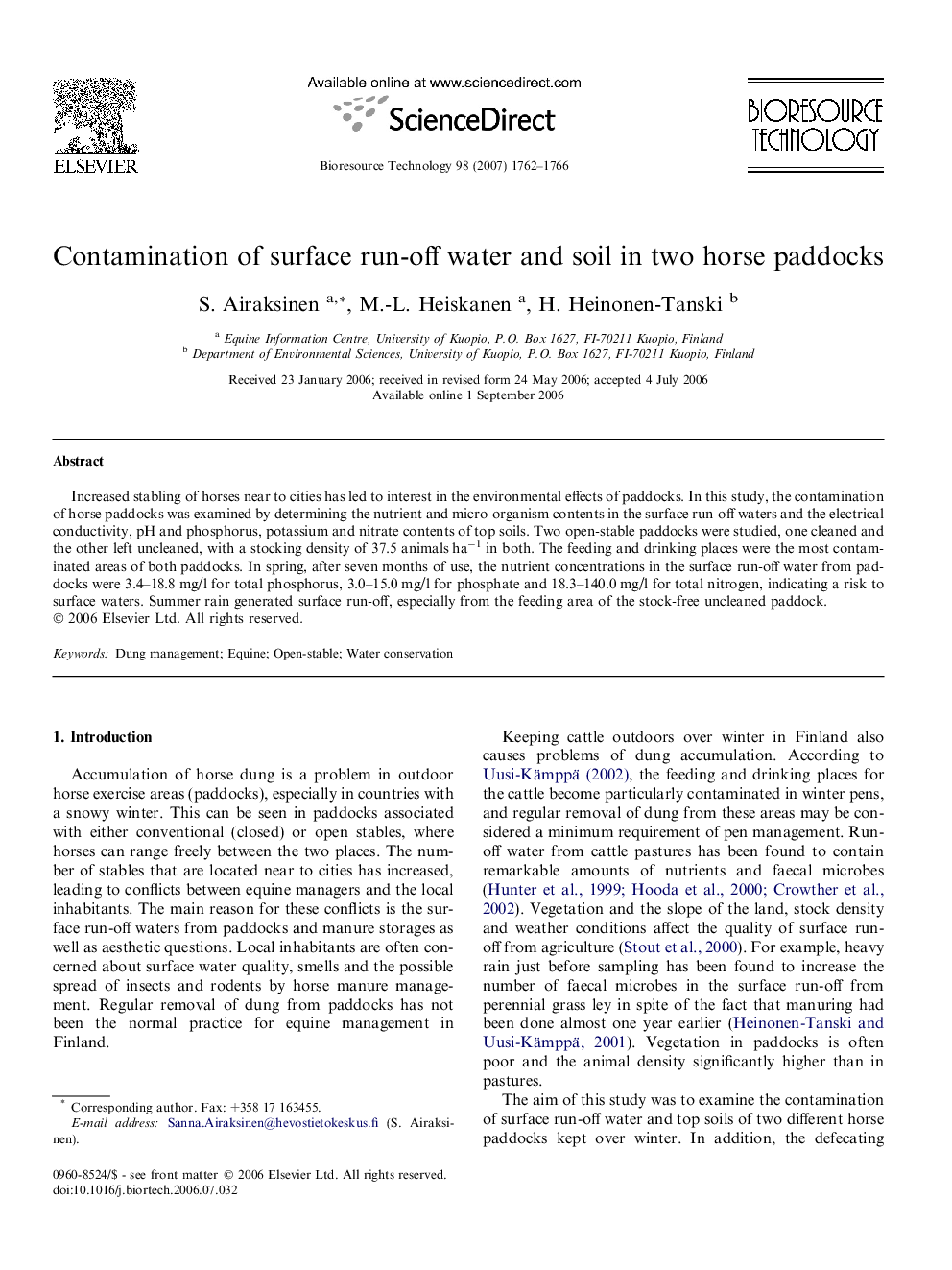| Article ID | Journal | Published Year | Pages | File Type |
|---|---|---|---|---|
| 686490 | Bioresource Technology | 2007 | 5 Pages |
Increased stabling of horses near to cities has led to interest in the environmental effects of paddocks. In this study, the contamination of horse paddocks was examined by determining the nutrient and micro-organism contents in the surface run-off waters and the electrical conductivity, pH and phosphorus, potassium and nitrate contents of top soils. Two open-stable paddocks were studied, one cleaned and the other left uncleaned, with a stocking density of 37.5 animals ha−1 in both. The feeding and drinking places were the most contaminated areas of both paddocks. In spring, after seven months of use, the nutrient concentrations in the surface run-off water from paddocks were 3.4–18.8 mg/l for total phosphorus, 3.0–15.0 mg/l for phosphate and 18.3–140.0 mg/l for total nitrogen, indicating a risk to surface waters. Summer rain generated surface run-off, especially from the feeding area of the stock-free uncleaned paddock.
